Dogs have been our companions for thousands of years, each breed developed with specific purposes. To better understand these breeds, organizations have categorized them into seven distinct dog breed groups based on their original purposes and dog breed traits.
Recognizing these groups helps prospective and current pet parents understand a dog’s behavior, energy levels, and care requirements according to their breed and purpose.
Although we have integrated most dog breeds into our urban lifestyle, most of them show traits that are deeply rooted in their dog breed group purpose. Whether it is the howling of Huskies, hyper-organisational fixation of German Shepherd or ankle-nipping of Border Collies – once we understand the dog breed group purpose, we can find out the solution to their behaviour problems.

1. Sporting Dog Breed Group
Sporting dogs were bred to assist hunters in locating and retrieving game birds. They are known for their high energy, intelligence, and friendly disposition.
Traits:
- Activity Level: Very high; they thrive on regular, vigorous exercise.
- Exercise Needs: Daily activities like running, fetching, and swimming are ideal.
- Mental Stimulation: Engaging games and training sessions prevent boredom.
- Nutritional Needs: Balanced diets rich in protein support their active lifestyles.
- Behavioral Considerations: Without adequate stimulation, they may develop destructive behaviors.
- Trainability: Generally eager to please and respond well to training.
Popular Sporting Dog Breeds:
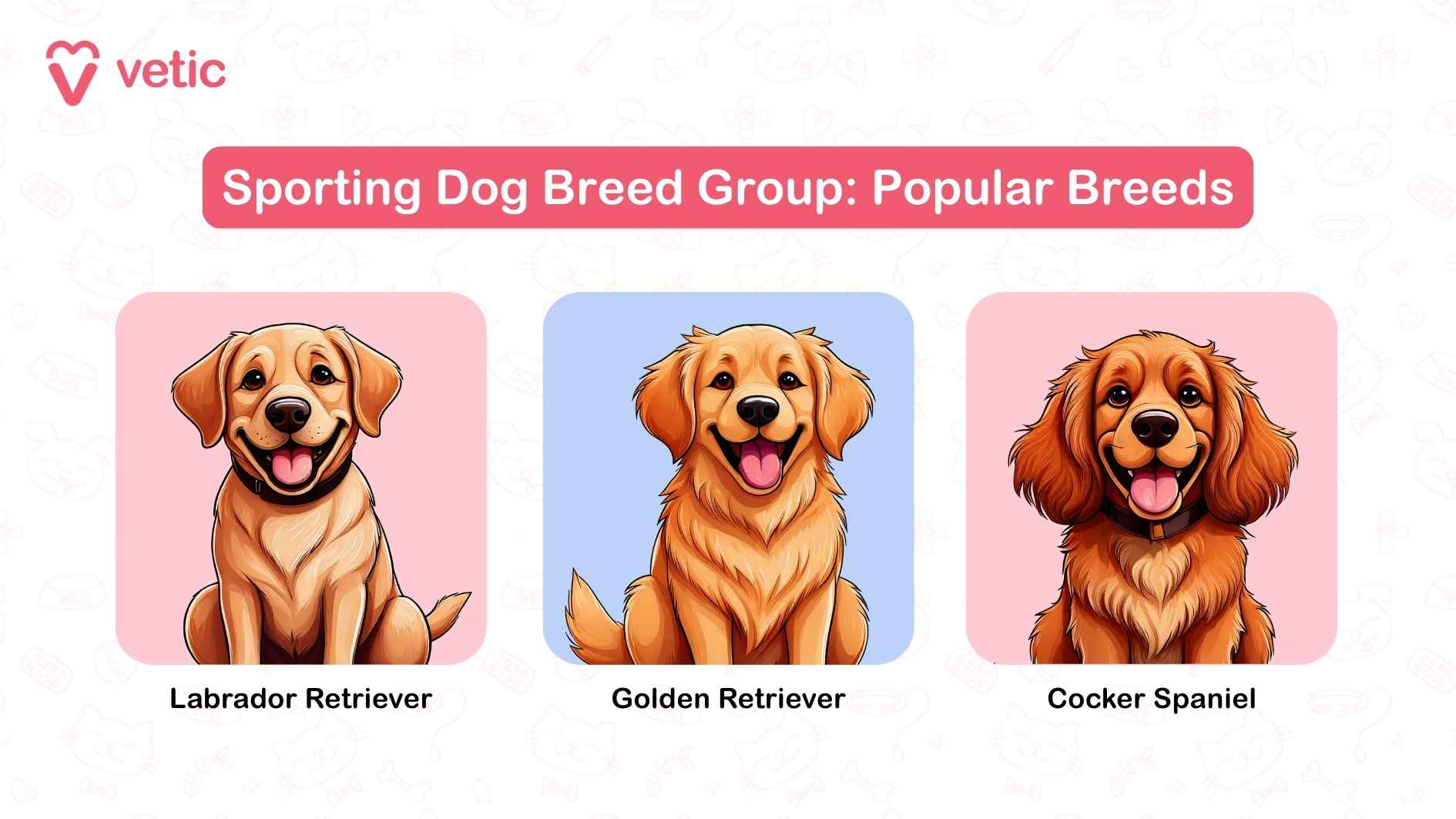
- Labrador Retriever: Friendly and outgoing; excellent family pets.
- Golden Retriever: Intelligent and devoted; great with children.
- Cocker Spaniel: Gentle and affectionate; adaptable to various living situations.
Less Common Sporting Dog Breeds:
- Spinone Italiano: Gentle and patient; requires regular exercise.
- Nova Scotia Duck Tolling Retriever: Energetic and intelligent; thrives with active families.
- Nederlandse Kooikerhondje: Alert and friendly; enjoys mental challenges.
Suitability: Sporting breeds are best suited for active individuals or families. In urban Indian settings, they require ample exercise and space, making them more suitable for homes with access to parks or open areas. First-time pet parents should be prepared for their high energy levels.
2. Hound Dog Breed Group
Hounds were developed for hunting due to their keen senses of smell and sight. They are often independent and have a strong prey drive.
Traits:
- Activity Level: Moderate to high; enjoy regular exercise.
- Exercise Needs: Activities that allow them to use their tracking instincts.
- Mental Stimulation: Scent games and puzzle toys keep them engaged.
- Nutritional Needs: Balanced diets tailored to their size and activity.
- Behavioral Considerations: May become vocal or wander if not properly exercised.
- Trainability: Can be independent; consistent training is essential.
Popular Hound Dog Breeds:
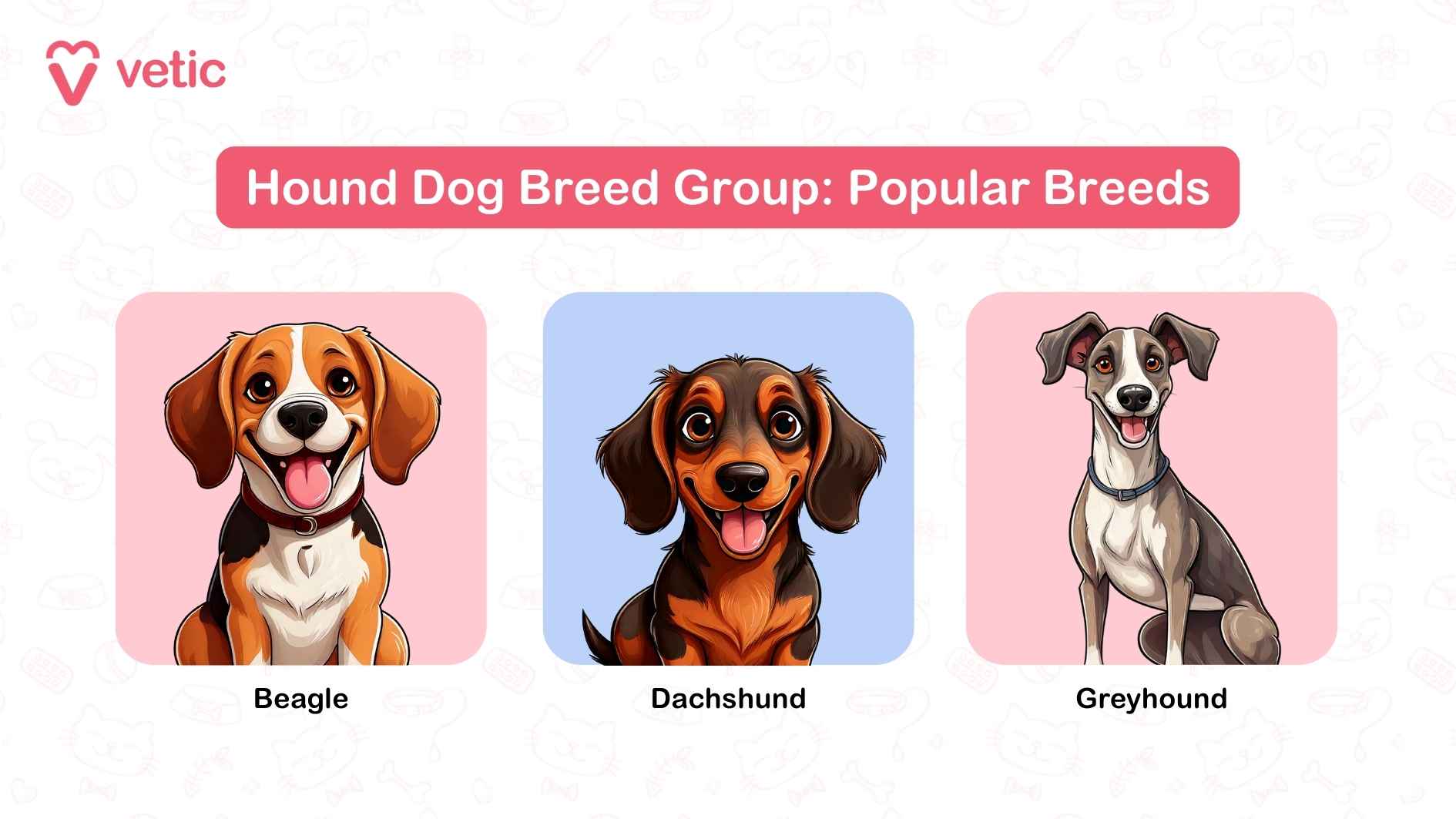
- Beagle: Friendly and curious; Beagles are great family companions.
- Dachshund: Clever and lively; adaptable to apartment living.
- Greyhound: Gentle and calm; enjoys short bursts of exercise.
Less Common Hound Dog Breeds:
- Basenji: Independent and quiet; known as the “barkless dog.”
- Harrier: Energetic and friendly; requires regular activity.
- Plott Hound: Loyal and alert; excels in tracking activities.
Suitability: Hounds can adapt to urban living if their exercise needs are met. Their independent nature may pose challenges for first-time owners, but with patience, they can be trained effectively.
3. Herding Dog Breed Group
Originally developed to herd livestock, these dogs are smart, energetic, and thrive when given a task.
Traits:
- Activity Level: Very high — they’re the workaholics of the dog world.
- Exercise Needs: Structured activities like herding games or agility are ideal.
- Mental Stimulation: Advanced training, puzzle toys, and interactive play are essential.
- Nutritional Needs: High-protein diets to match their busy lifestyle.
- Behavioral Considerations: Can get frustrated or develop herding behaviors (including herding kids and cats!) if bored.
- Trainability: Extremely intelligent and quick to learn.
Popular Herding Dog Breeds:
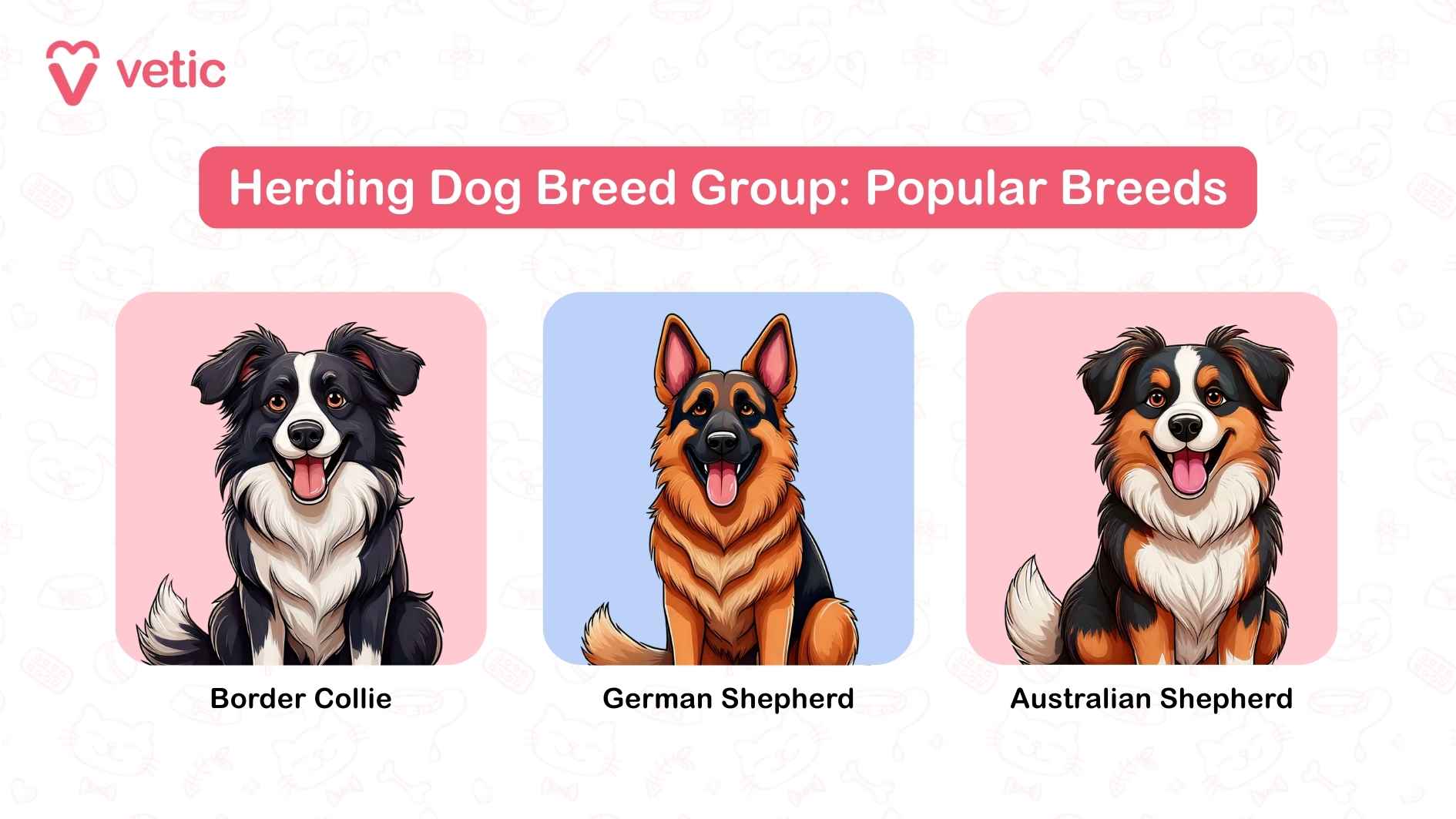
- Border Collie: Often called the smartest dog breed. Loves to work.
- German Shepherd: Loyal, brave, and an all-rounder in police and family roles.
- Australian Shepherd: Energetic and beautiful with a strong herding instinct.
Less Common Herding Dog Breeds:
- Belgian Malinois: Powerful and fast; often used in security and military.
- Bearded Collie: Fluffy, cheerful, and energetic.
- Puli: Famous for its corded coat, and its agility.
Suitability: Only suited for experienced owners who can offer enough stimulation and space. Not the best choice for low-energy or first-time pet parents unless you’re ready to put in the work.
4. Working Dog Breed Group
These breeds were bred to perform tasks such as guarding property, pulling sleds, and performing water rescues. They are strong, intelligent, and protective.
Traits:
- Activity Level: Moderate to high; enjoy having a job to do.
- Exercise Needs: Regular physical and mental challenges.
- Mental Stimulation: Training sessions and task-oriented games.
- Nutritional Needs: High-quality diets to support their size and energy.
- Behavioral Considerations: Without proper training, they may become dominant.
- Trainability: Highly trainable but require a confident handler.
Popular Work Dog Breeds:
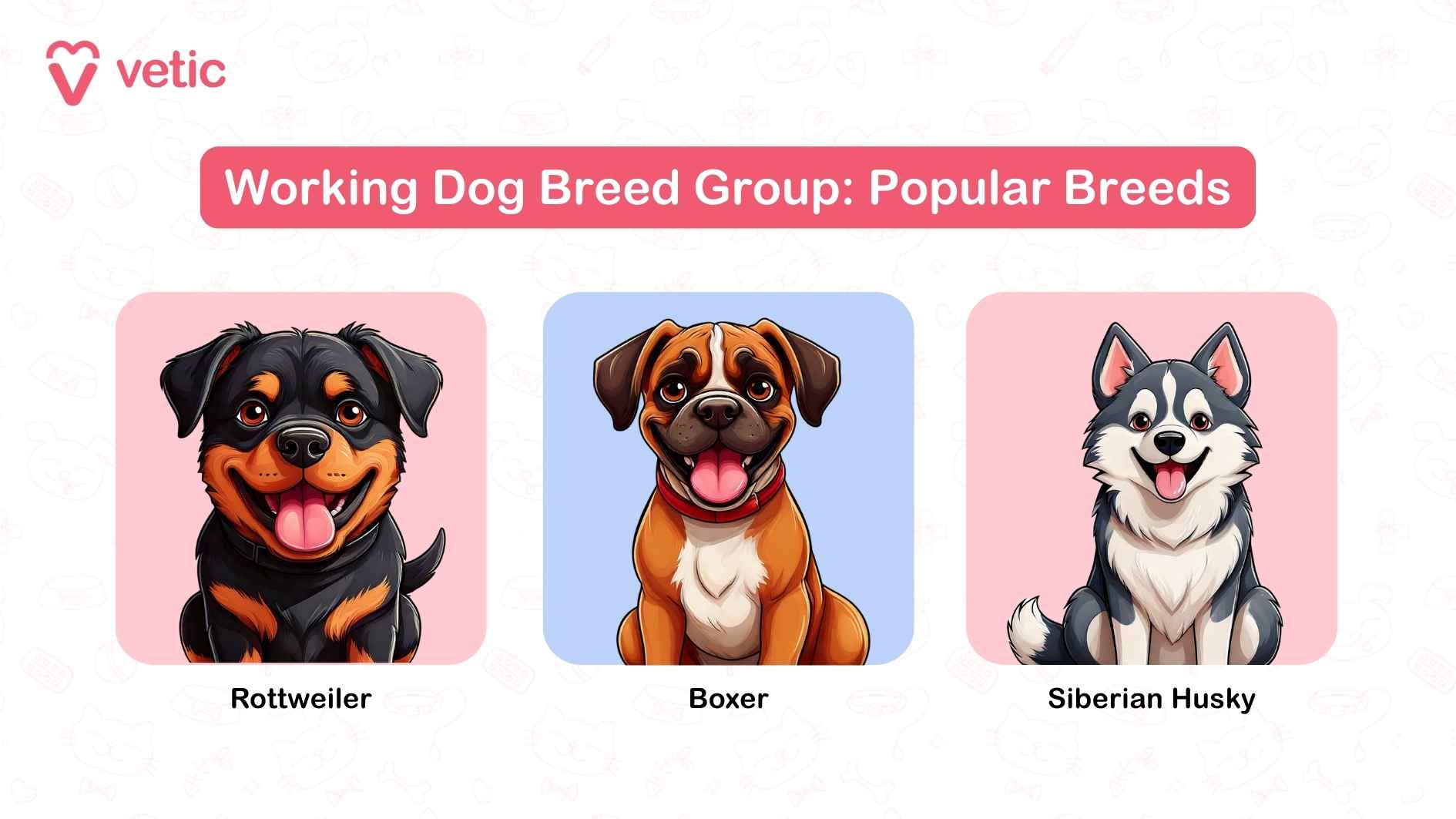
- Rottweiler: Loyal and confident; excellent guardians.
- Boxer: Playful and protective; great with families.
- Siberian Husky: Friendly and energetic; known for their endurance.
Less Common Work Dog Breeds:
- Anatolian Shepherd Dog: Independent and protective; best for experienced owners.
- Leonberger: Gentle and affectionate; requires space to roam.
- Tibetan Mastiff: Strong-willed and aloof; natural guardians.
Suitability: Working breeds may find urban Indian environments challenging due to space constraints. They are better suited for experienced owners who can provide firm training and adequate exercise.
5. Terrier Dog Breed Group
Terriers were originally bred to hunt and eliminate rodents, often digging them out from underground. Small but mighty, they pack a lot of personality into a compact body.
Traits:
- Activity Level: High; they’re like little energy bombs.
- Exercise Needs: Daily play and interactive walks are a must.
- Mental Stimulation: Puzzle toys, agility training, and scent games work wonders.
- Nutritional Needs: A high-quality diet that supports their high metabolism.
- Behavioral Considerations: Without stimulation, they can become noisy or destructive (and may start a DIY digging project in your potted plants).
- Trainability: Smart but stubborn. They learn quickly but might ignore you anyway.
Popular Terrier Dog Breeds:
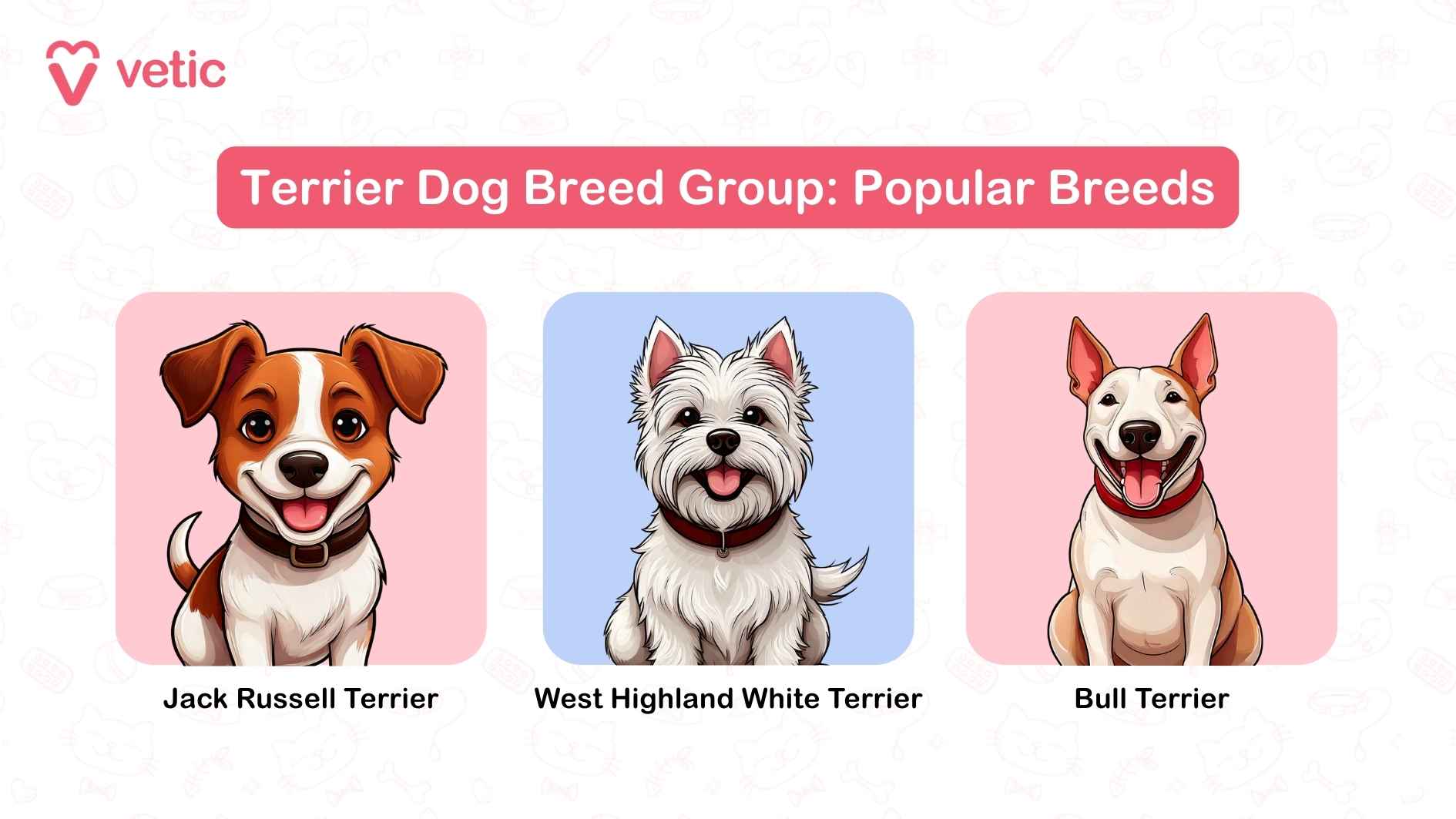
- Jack Russell Terrier: Fearless, fast, and always up for a game.
- West Highland White Terrier (Westie): Cheerful and friendly, with a bold streak.
- Bull Terrier: Muscular, playful, and known for their egg-shaped head.
Less Common Terrier Dog Breeds:
- Border Terrier: Affectionate and good with families, but needs exercise.
- Cairn Terrier: Alert and curious, famously starred as Toto in The Wizard of Oz.
- Lakeland Terrier: Confident and spirited, but less commonly seen today.
Suitability: Terriers can thrive in Indian cities but require committed owners. Their loud barks and prey drive may be challenging for first-time pet parents, but their loyalty and charm make up for it.
6. Toy Dog Breed Group
These tiny dogs were bred primarily as companions. Don’t let the size fool you. They’re full of sass and personality.
Traits:
- Activity Level: Moderate; bursts of play followed by long naps.
- Exercise Needs: Short walks and indoor playtime usually suffice.
- Mental Stimulation: Training sessions and small toys keep their brains buzzing.
- Nutritional Needs: Small-breed formulas to match their tiny tummies.
- Behavioral Considerations: May develop separation anxiety if left alone too long.
- Trainability: Intelligent but can be pampered and picky about listening.
Popular Toy Dog Breeds:
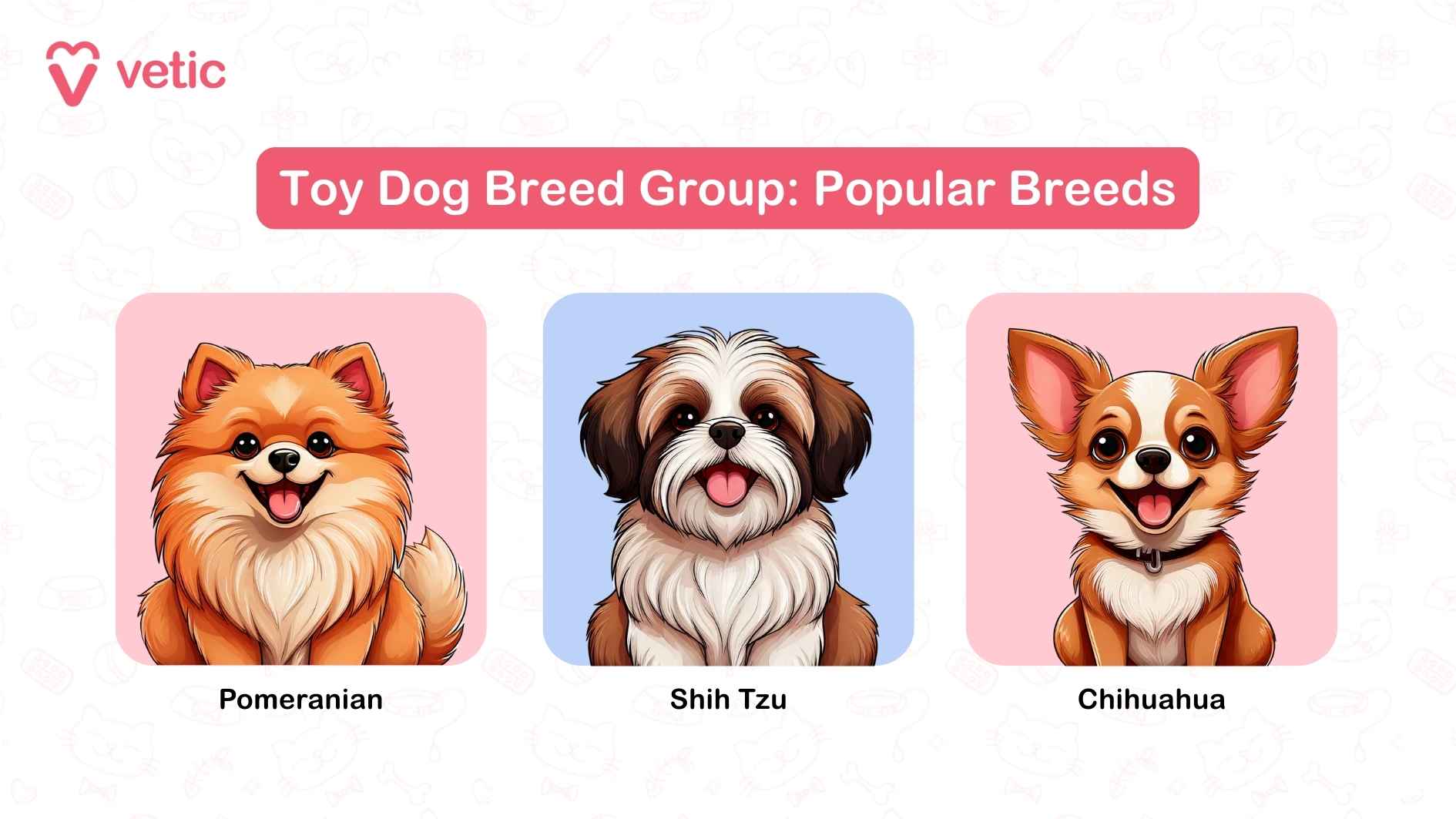
- Pomeranian: Fluffy, bold, and chatty — basically the gossip of the dog world.
- Shih Tzu: Calm and friendly, Shih Tzus are perfect lap dogs.
- Chihuahua: Tiny but with the heart of a lion.
Less Common Toy Dog Breeds:
- Japanese Chin: Quiet and cat-like, they love sitting in high places.
- Brussels Griffon: Expressive faces and a whole lot of character.
- Russian Toy: Graceful and rare, they bond deeply with their humans.
Suitability: Ideal for apartments and first-time owners. Toy breeds do well in Indian homes but require gentle handling and careful attention to diet and grooming.
7. Non-Sporting Dog Breed Group
This is the wildcard group. The non-sporting dog group is a mixed bag of breeds that don’t fit neatly into the other categories. They vary in size, temperament, and appearance.
Traits:
- Activity Level: Varies greatly — from couch potatoes to playful pups.
- Exercise Needs: Depends on the breed; some need daily walks, others are content lounging.
- Mental Stimulation: Toys, short training sessions, and companionship are key.
- Nutritional Needs: Tailored to the breed’s size and energy levels.
- Behavioral Considerations: With such variety, behaviors can range from chill to clownish.
- Trainability: Generally good, but again, it depends on the individual breed.
Popular Non-Sporting Dog Breeds:
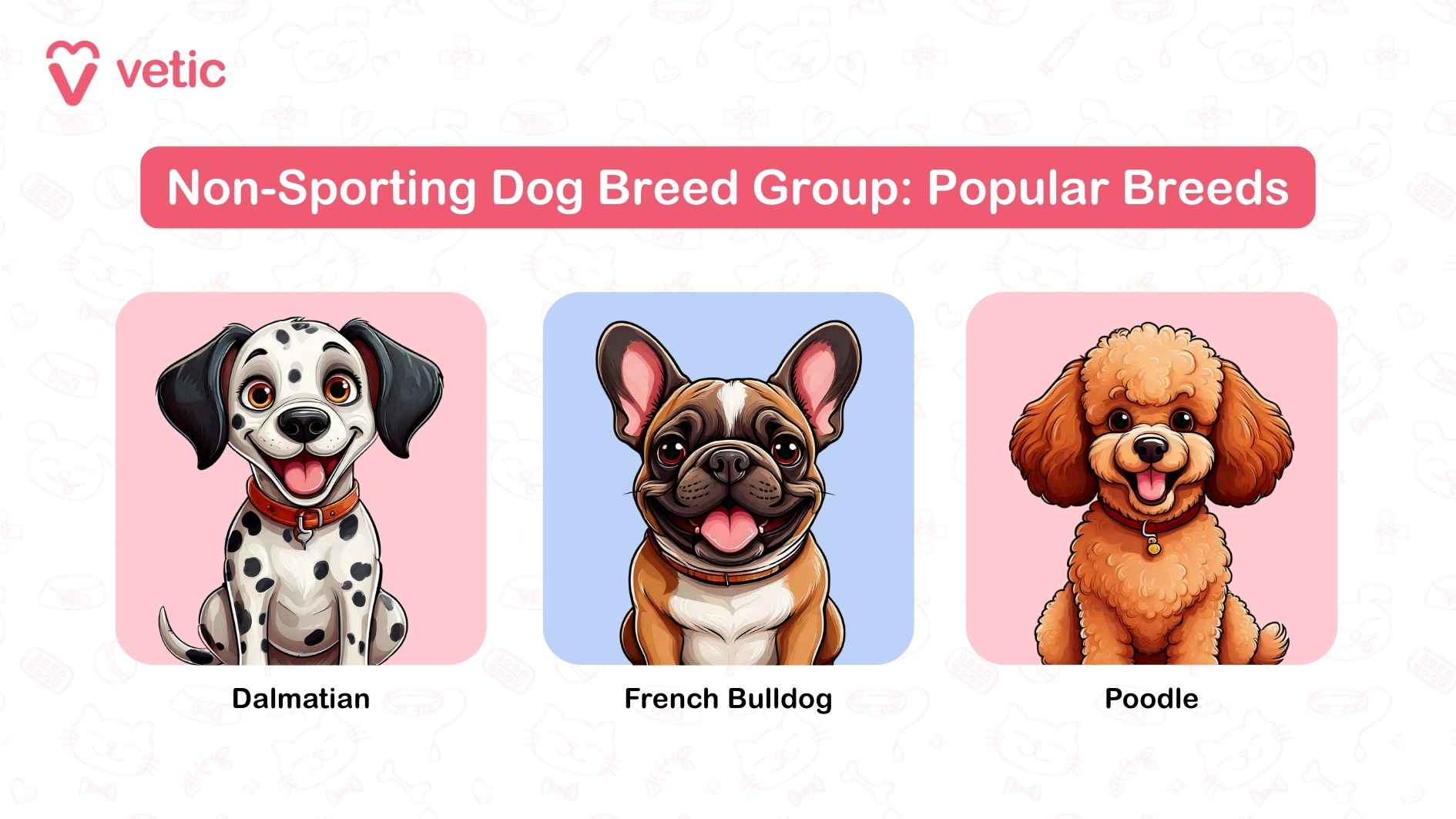
- Dalmatian: Energetic, striking, and loyal.
- French Bulldog: Adaptable and affectionate, great for apartment living.
- Poodle (Standard & Miniature): Super smart, and hypoallergenic too.
Less Common Non-Sporting Dog Breeds:
- Lhasa Apso: Regal and independent with a rich history.
- Tibetan Spaniel: Alert and curious, but not overly demanding.
- Xoloitzcuintli (Mexican Hairless): Unique and affectionate, with ancient origins.
Suitability: Many non-sporting dogs are great for Indian urban living. Just be sure to match your lifestyle with the dog’s individual personality and care needs.
Understanding dog breed groups is like having a cheat sheet to better understand your dog’s instincts, behavior, and needs. But remember — while breed groups give us helpful generalizations, each dog is unique. Even two Labradors can be as different as chalk and cheese based on how they’re raised, trained, and loved.
So whether you’re a first-time dog parent or planning to welcome another wagging tail into your home, choosing the right breed (or mix!) means understanding their roots – and giving them the care they were bred to need.
And hey, if your dog doesn’t quite act like the breed description says? That just makes them special.

